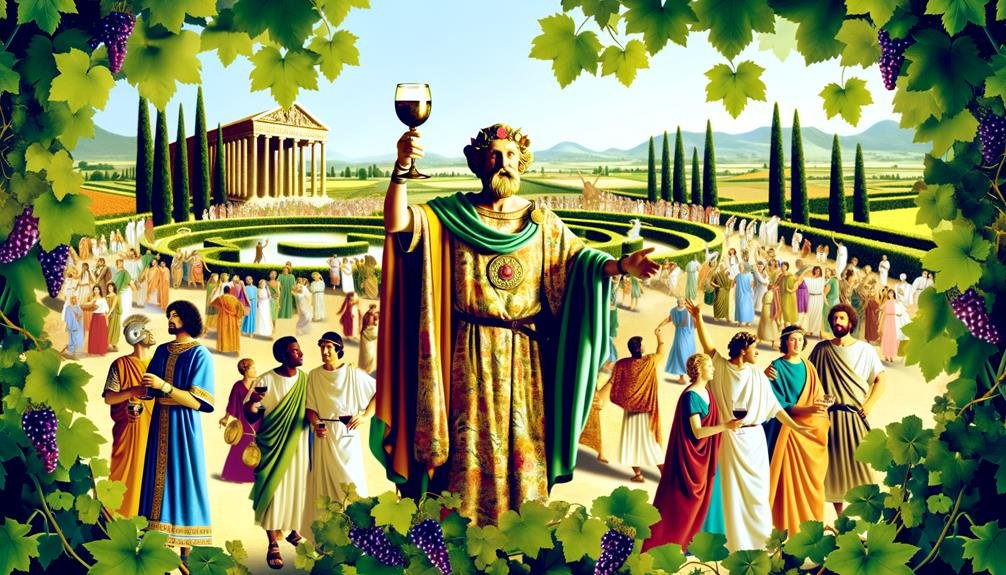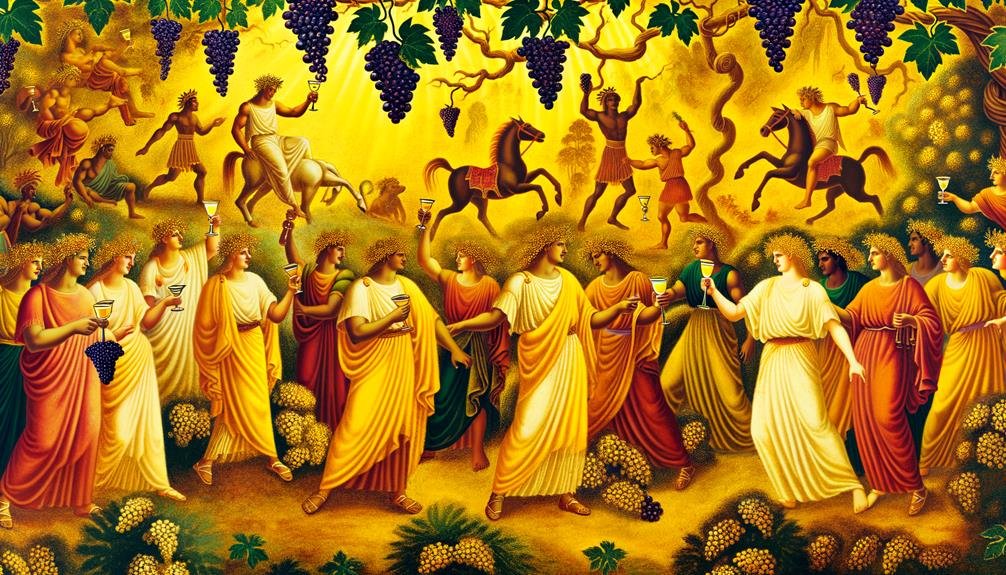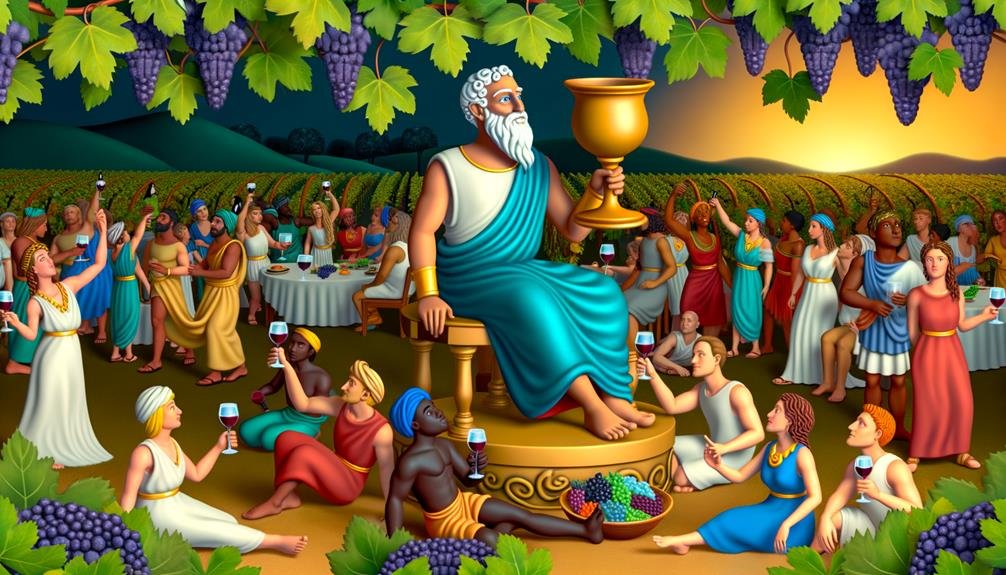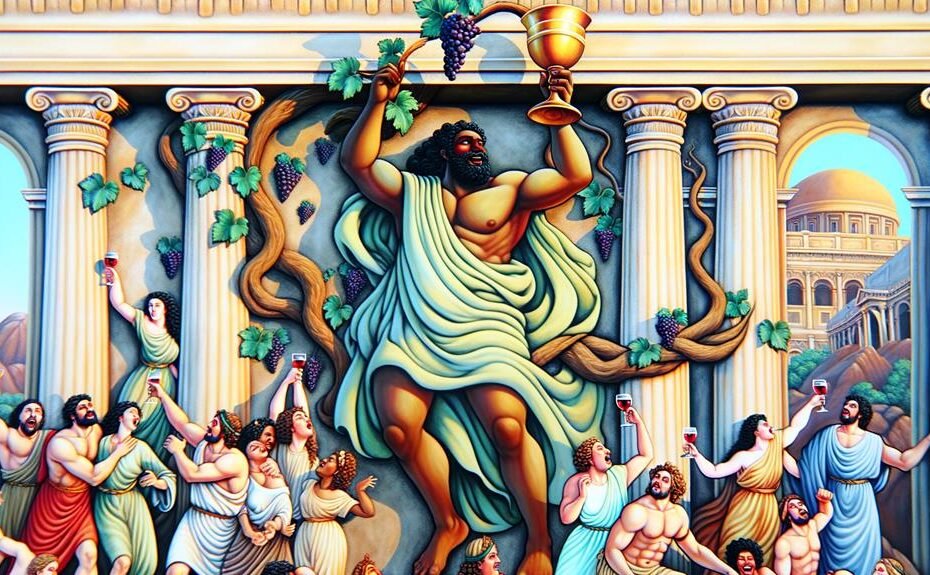Bacchus, a prominent figure in Roman mythology, embodies the essence of celebration, wine, and agriculture, mirroring his Greek counterpart Dionysus. His story is a blend of divine and mortal elements, being the offspring of Jupiter and the human Semele. This unique mix of characteristics adds depth to his representation in various art forms and literature.
Bacchus's symbolism, entourage of satyrs and maenads, and the rituals dedicated to him offer insights into the cultural significance surrounding his worship. Bacchus's imagery is rich with symbolism, often depicted with attributes like grapes, wine, and the thyrsus, a staff topped with a pine cone. These symbols represent abundance, fertility, and the pleasures of indulgence, reflecting the importance of these themes in Roman society. His entourage of satyrs, half-human and half-animal creatures, and maenads, frenzied female followers, further emphasize the wild and uninhibited nature of his celebrations.
Rituals dedicated to Bacchus were vibrant and lively affairs, involving music, dance, and the consumption of wine. These festivities were not only a form of worship but also a way for Romans to connect with nature, celebrate the harvest, and indulge in the pleasures of life. The Bacchanalia, a Roman festival in honor of Bacchus, was known for its exuberant and sometimes chaotic nature, reflecting the god's association with revelry and ecstasy.
Overall, Bacchus's presence in Roman mythology highlights the interconnectedness of humanity, nature, and the divine. Through his stories, symbols, and rituals, Bacchus embodies the spirit of joyous celebration and the abundance of life, making him a captivating figure in the pantheon of Roman gods.
Origins and Mythology

Derived from Greek mythology, Bacchus was inspired by the god Dionysus and found his place in Roman mythology as the god of agriculture, wine, and festivities. What makes Bacchus unique is his dual heritage, being the son of Jupiter and the mortal Semele. This blend of divine and mortal lineage sets Bacchus apart from the other gods of Mount Olympus. His extraordinary birth story, where he was born twice in remarkable circumstances, adds to his intriguing mythology.
Bacchus was raised and educated by Silenus, a wise mentor who taught him the secrets of cultivating vines and making wine. As Bacchus traveled with his companions, the satyrs and maenads, he spread joy and abundance wherever he went.
Through his teachings and revelries, Bacchus symbolized the balance between innovation and tradition, promoting the prosperity of agriculture and the celebration of life's pleasures. His influence on ancient Roman culture was profound, shaping the way people viewed wine, agriculture, and communal celebrations.
Iconography and Symbols
Bacchus is often depicted as a youthful figure adorned with grape bunches and a wine cup, symbolizing his association with wine and revelry. He is frequently shown wearing a crown of ivy, emphasizing his connection to nature and the vine.
Another important symbol linked to Bacchus is the thyrsus, a staff wrapped in ivy and topped with a pinecone, symbolizing prosperity and pleasure. These symbols collectively highlight his role as a god of agricultural abundance and joyful celebration.
The dual portrayal of Bacchus, as both youthful and occasionally bearded, reflects his diverse influence, encompassing the energy of youth and the wisdom of age within the realms of festivity and fertility.
Followers and Entourage

Accompanied by a lively group of followers, Bacchus was always surrounded by satyrs and maenads, embodying his unruly spirit and influence over wine and revelry. Satyrs, known for their mischievous and playful nature, added a lively dynamic to Bacchus's entourage. Maenads, female devotees often depicted in states of ecstatic dance and intoxication, brought a sense of wild abandon to the gatherings. Together, they formed the Thiasus, creating an atmosphere of perpetual celebration and chaos.
Silenus, an older and wiser satyr, played a significant role as Bacchus's mentor and companion. His guidance and experience added depth to the group, balancing out the youthful exuberance of the satyrs and maenads. The interactions between Bacchus, Silenus, and the rest of the entourage showcased a diverse range of personalities and energies, each contributing to the vibrant aura surrounding Bacchus.
This lively and diverse group of followers exemplified the essence of Bacchus, capturing the spirit of joy, abandon, and revelry that he represented. Their presence added color and excitement to Bacchus's gatherings, creating an atmosphere of celebration and merriment that was truly infectious.
Rituals and Sacrifices
The worship of Bacchus revolved around rituals and sacrifices aimed at honoring him and safeguarding the vineyards. These ceremonies involved offering goats and swine, animals known for causing harm to grapevines. The purpose of these sacrifices was to please Bacchus and seek his favor for ensuring successful harvests.
These rituals were not just symbolic gestures; they played a crucial role in ensuring agricultural prosperity and fostering community unity. Participants would partake in elaborate ceremonies, singing hymns and dancing to invoke blessings from Bacchus. These traditions highlighted the close relationship between Bacchus and the cultivation of grapes.
In a society where wine was both economically and culturally significant, these practices demonstrated innovative ways to align human actions with the divine and natural realms.
Cultural Impact and Legacy

Bacchus made a lasting impact on Roman society, influencing various aspects of culture that continue to resonate today. His legacy is evident in art, literature, festivals, agricultural practices, and religious integration.
In art and literature, Bacchus served as a muse for countless creations, inspiring works that captured both joy and chaos. From vibrant mosaics to poetic verses, his influence was pervasive.
Festivals and celebrations in honor of Bacchus, such as the Bacchanalia, brought communities together in uninhibited revelry, fostering bonds and allowing for free expression.
Bacchus's association with viticulture revolutionized wine production, leading to advancements that impacted economies and social customs. His influence on agricultural practices extended beyond the vineyard.
The integration of Bacchus's rites into other religious practices showcased his adaptability and significance in Roman spirituality. His presence was felt in various religious ceremonies and rituals, highlighting his importance in the pantheon of Roman gods.
Conclusion
Bacchus symbolizes the joy of celebration and unity in Roman society through his association with revelry and wine. His imagery, featuring grape clusters and a wine goblet, along with his lively followers like satyrs and maenads, embody abundance and festivity.
By participating in rituals, making sacrifices, and embracing cultural traditions linked to Bacchus, Romans honor the importance of wine and agriculture in fostering communal happiness and prosperity. His influence underscores the enduring significance of these elements in Roman culture, emphasizing the role of collective joy in bringing people together.
